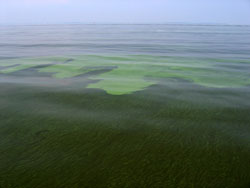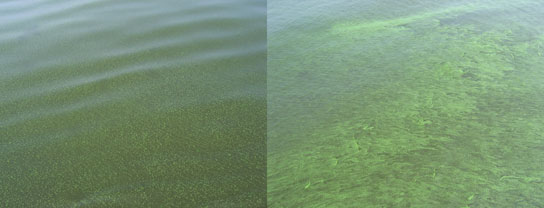Microcystin toxin present in the Sassafras River blue-green algal bloom; DNR Press Release. |
||
|
Water samples collected on July 22nd from the Sassafras River system during the early days of the blue-green algal bloom in the area of Turner's Creek boat launch tested positive for microcystin toxins at Dr. Wayne Carmichael's Wright State University laboratory. Water samples were dominated by the toxigenic phytoplankton species Microcystis aeruginosa. Toxin concentrations reported this week were greater than World Health Organization drinking water quality guidelines (1 ug/L) for human health safety from long term, chronic toxin exposure. However, toxin levels are lower than concentrations observed in September 2000 samples from another blue-green algal bloom event on the Sassafras River. The 2000 bloom event closed Betterton Beach from August through the Labor Day weekend and well into September. Toxin levels of four samples collected from the Sassafras River on September 12, 2000, ranged from 591 to 1041 ug/g dry weight of algae; Microcystin levels were considered moderate to high. The samples collected from Turner's Creek and the main channel Sassafras River on July 22, 2003, showed microcystin concentrations of 7.1 to 10.2 ug/g dry weight of algae. The latest July results are also expressed relative to water volume as a range of 2.5 to 3.4 ug toxin/L. The August 13, 2003 Interagency Press Release on the toxin results is available for further information regarding the algal bloom.
|


